HISTORY 135F
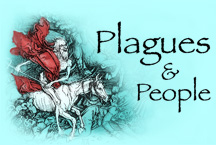
Infectious and
Epidemic Disease in History
Department of History
University of California, Irvine
Instructor: Dr. Barbara J. Becker
HISTORY 135F

Infectious and
Epidemic Disease in History
Department of History
University of California, Irvine
Instructor: Dr. Barbara J. Becker
| Recorded instances of probable polio before the 20th century: |
Treatise on Diseases of Children (1789)
by London physician, Michael Underwood (1737-1820)
Paralysis "usually attacks children previously reduced by fever; seldom those under one, or more than four or five years old.... [W]hen both [legs] have been paralyzed, nothing seems to do any good but irons [braces] to the legs, for the support of the limbs, and enabling the patient to walk."Sir Walter Scott (1771-1832): [At the age of 18 months, I] "was discovered to be affected with the fever.... On the fourth [day]... I had lost the power of my right leg.... The impatience of a child soon inclined me to struggle with my infirmity, and I began by degrees to stand, to walk, and to run. Although the limb affected was much shrunk and contracted, my general health ... was much strengthened by being frequently in the open air...." |
| 1840: | German orthopedist, Jacob von Heine, localized polio's pathology to the spinal cord |
| Outbreaks (10-20 cases each) in: | |
| 1883:
1885: 1886: |
Italy
|
| 1887: | Stockholm, Sweden (44 cases) |
| 1892: | Russian botanist, Dmitri Ivanovsky (1864-1920) discovers "filterable viruses": disease-producing agents so small they can pass through pores of earthen filters |
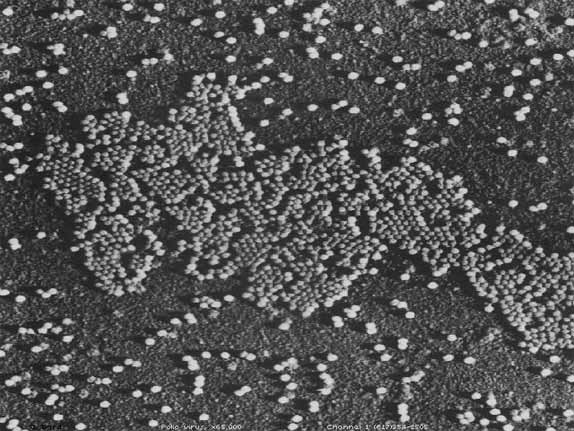
The poliovirus magnified 65,000 times. |
| Outbreaks in: | |
| 1893: | Boston (26 cases) |
| 1894: | Rutland, Vermont (132 cases)
|
| 1905: | Sweden--outbreak affects over 1000 children |
| 1908: | Karl Landsteiner and E. Popper inject spinal cord tissue from polio victim into monkeys which produces polio lesions; this discovery makes it possible for researchers to conduct laboratory experiments on the disease. |
| 1916: | New York City (9,000 cases) |
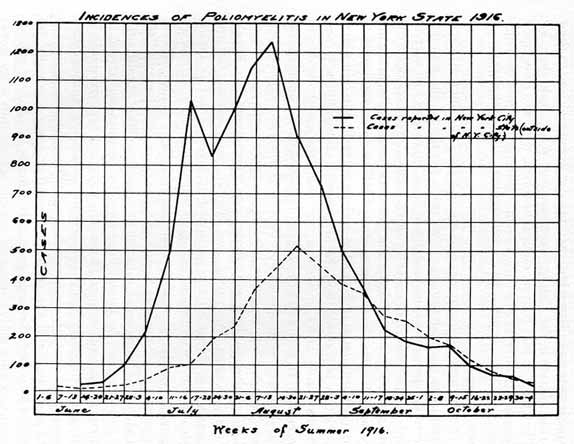
|
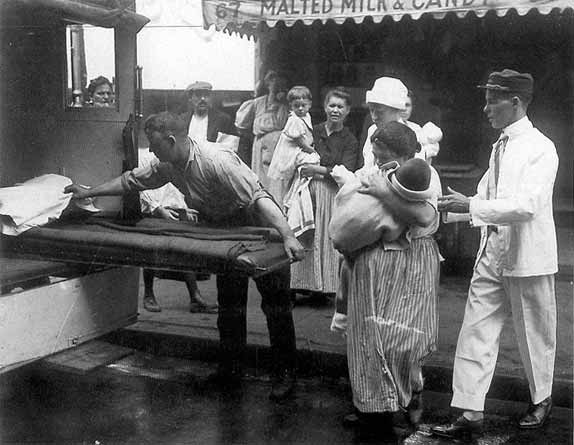
A New York mother carries her stricken child to a waiting hospital transport. |
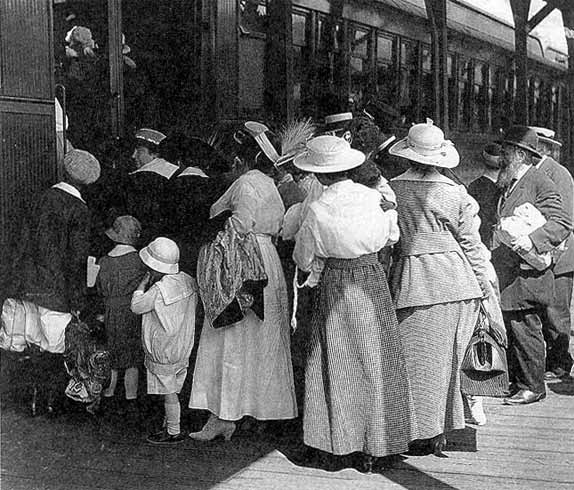
Mothers and children with the means to do so, flee New York and polio. |
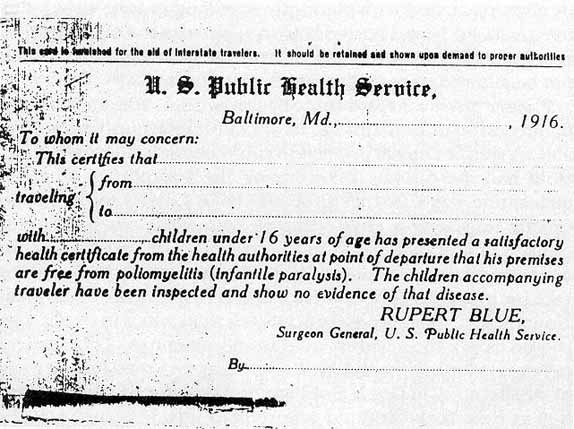
Travelers were required to carry a health certificate. |
Simon Flexner (1891-1946)
director of the Rockefeller Institute |
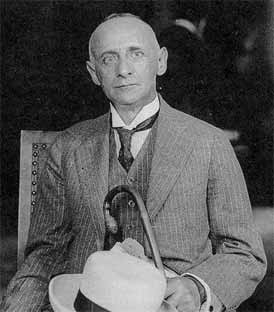
|
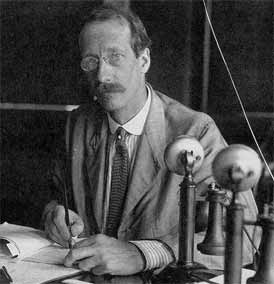
|
Haven Emerson (1874-1957)
New York City health commissioner |
| Leaflet distributed by the New York City health department during the polio epidemic, 1916. |
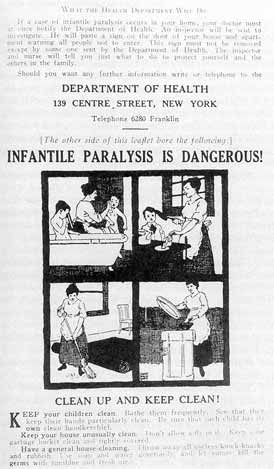
|
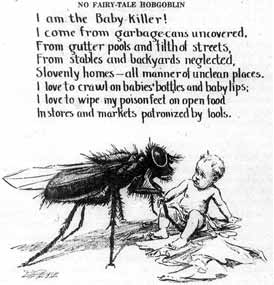
|
Flies as possible polio vectors.
From Newark Evening News, June 1916.
|
| Preventing the spread of polio in hospital with glass partitions. |

|
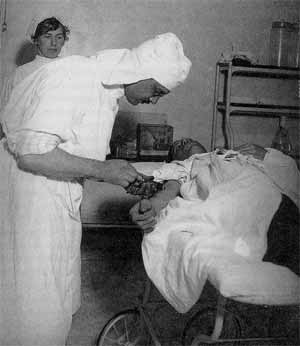 |
Withdrawing blood from a donor for polio serum, August 1916. |
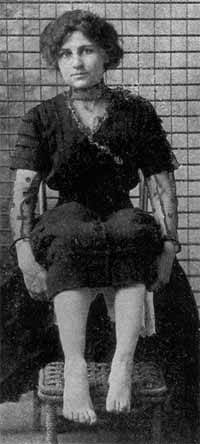
|

The crippling effects of polio.
Infantile paralysis, by Eadweard Muybridge (1830-1904) |
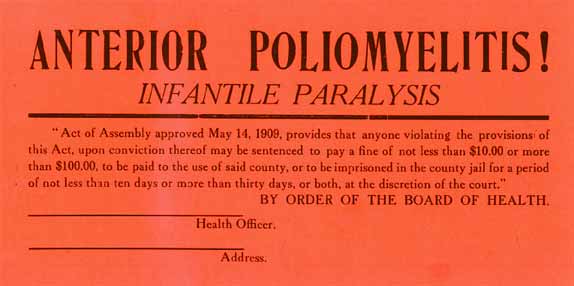
Protecting the public.
|
|
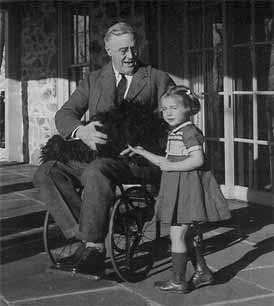
|
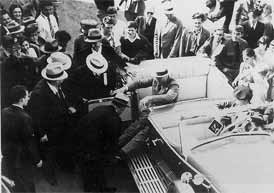
|
| Roosevelt was an ardent supporter of medical research on the prevention and treatment of polio. | |
Franklin Delano Roosevelt was an ardent supporter of medical research on the prevention and treatment of polio. In 1938, he established the National Foundation for Infantile Paralysis to encourage the search for a polio vaccine. The fundraising effort to support this research became known as the "March of Dimes." In 1946, Roosevelt's portrait was placed on the U.S. dime. |
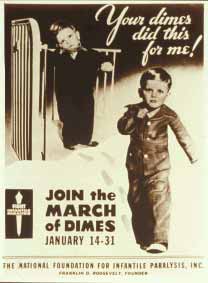 |
 |
|
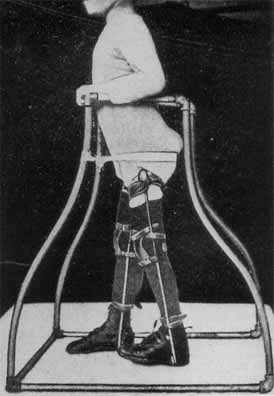
|
After-treatment for polio survivors: physical and occupational therapy
|
Australian nurse, Elizabeth Kenny (1880-1952), rallied considerable support worldwide for her controversial polio therapy. She was convinced that polio was a spastic condition of the muscular tissue and that braces lessened a patient's chances for a full recovery. In fact, she believed braces--not the polio infection itself--may even cause the permanent paralysis observed in some polio victims. She advocated a regimen of warm baths and hot compresses. She claimed that muscles could "relearn" normal movement through regular guided exercise of affected limbs. In 1940, Kenny came to the United States. Two years later, she established the Sister Kenny Institute in Minneapolis. |

|
|
|
|
| Paralysis sometimes affected a patient's ability to breathe and/or swallow. In 1927, Harvard engineers, Philip Drinker (1894-1972) and Louis Agassiz Shaw (1886-1940), developed a machine that could artificially force air in and out of a patient's lungs. The Drinker respirator, or "iron lung" saved many lives. |
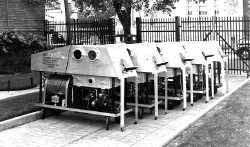
|
 |
|
 Jonas Salk (1914-1995) made the medical breakthrough every parent was waiting for: he developed a "killed virus" polio vaccine in 1955. |
|
| In 1961, Albert Sabin (1906-1993) introduced a "live virus" polio vaccine.
|
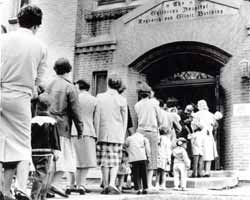
Families line up in 1961 to receive their Sabin vaccine. |
| Wee Scots swallow their doses of the oral Sabin vaccine. Although paralysis is the most obvious of polio's after effects, it is a disease of the gut that naturally enters the body through the mouth. Despite the risks of contracting the disease by ingesting the weakened live virus, an oral vaccine is a more natural and more certain method of boosting the body's immunity to polio. | |
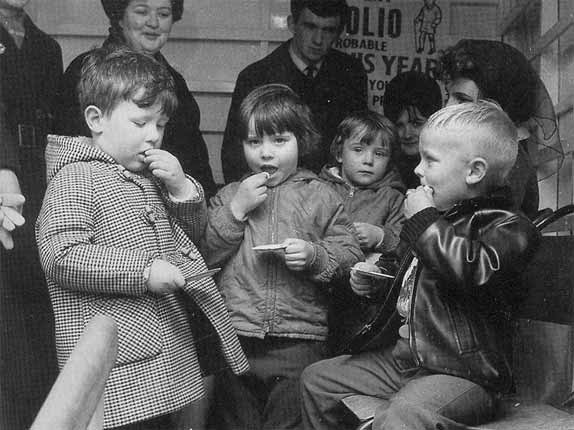 |
|
1979 |
last case of polio caused by wild polio virus in the U.S. | |
1988 |
World Health Organization [WHO] and United Nations Children's Fund
[UNICEF] launch global effort to eradicate polio
350,000 children in 125 countries newly paralyzed by polio |
|
1989 |
case of vaccine-related poliomyelitis reported in 22 year-old female resident of Sumter County, Georgia | |
August 1991 |
Luis Fermín Tenorio Cortez (b. 1989) of Junín, Peru, documented as last victim of wild polio virus in the Americas
Luis Fermín Tenorio Cortez in 2001 |
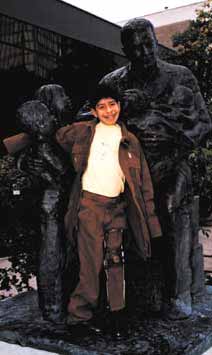
|
March 1997 |
last case of polio in the Western Pacific reported in Cambodia | |
December 2000 |
mutated strain of polio virus traced to the oral polio vaccine infects people in the Dominican Republic and Haiti, causing the first cases of the disease in the Western Hemisphere since 1991 | |
2001 |
480 new cases in 10 countries | |
2006 |
Endemic poliomyelitis is found in only four countries in the world: Nigeria, India, Pakistan, and Afghanistan
1,997 new cases reported worldwide: 1,122 in Nigeria, 676 in India |
|
2007 |
1,315 new cases reported worldwide: 285 in Nigeria, 874 in India | |
2008 |
1,652 new cases reported worldwide: 799 in Nigeria, 559 in India | |
2009 |
1,606 new cases reported worldwide: 388 in Nigeria, 741 in India | |
to Oct 2010 |
706 new cases reported worldwide (down from 1,126 reported in the same time period the previous year). Twelve cases reported in Russia, the first in over a decade. | |
Nov 2010 |
324 cases and 146 deaths reported in a major outbreak of polio in the Republic of Congo | |
 |
| Go to: |
|
|